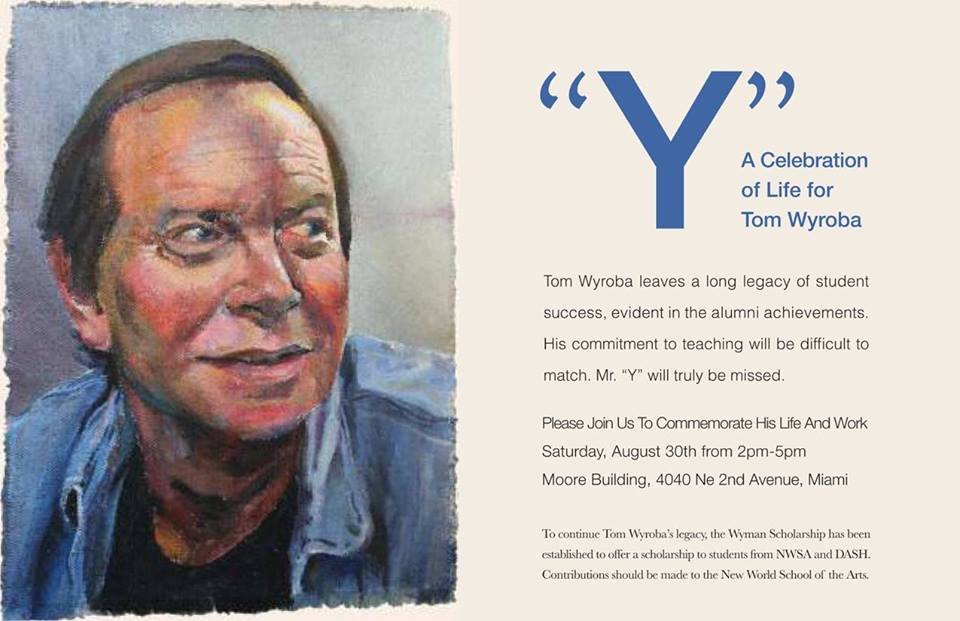
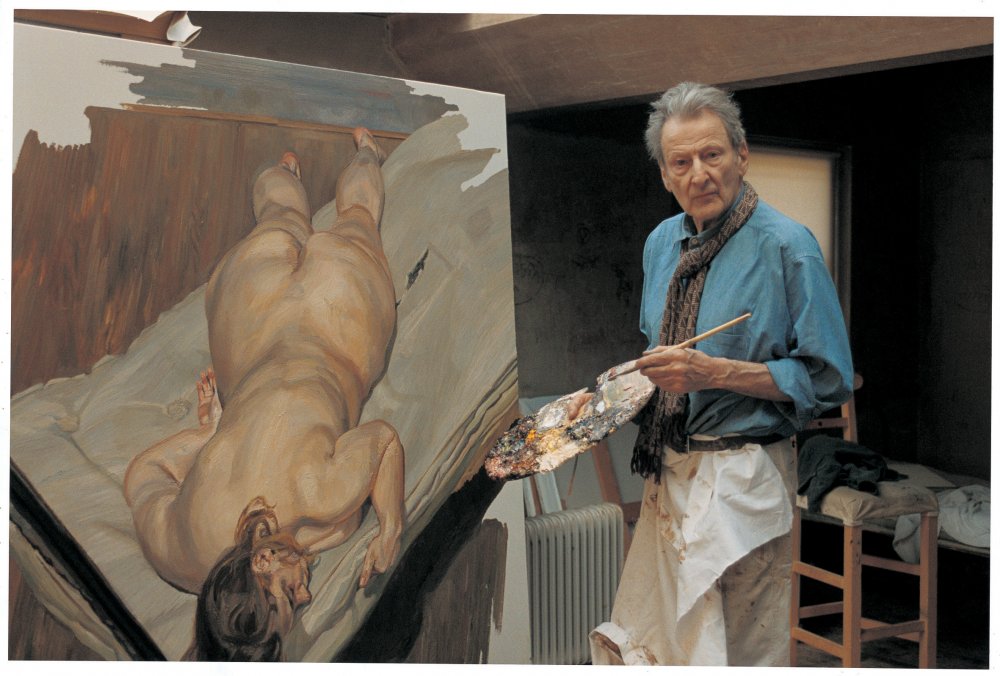
Lucian Freud, the British painter of regular people in all their fleshy glory who stayed loyal to portraiture and realism even when modern art veered toward the abstract, has died. He was 88.
Freud died last night at his home in London after a brief illness, said William Acquavella, owner of Acquavella Galleries in New York, which is Freud’s worldwide dealer.
A grandson of Sigmund Freud, the founder of psychoanalysis, Freud preferred to use friends and family members, including his mother, as subjects of his portraits, using thick gobs of paint to reveal the human body’s curves, folds and imperfections. (He preferred the term “naked” rather than “nude.”) Starting in the 1980s he graduated to larger and larger canvases.
“I paint people not because of what they are like, not exactly in spite of what they are like, but how they happen to be,” he said.
Bloomberg News critic Jorg von Uthmann, in a review of a 2010 show at the Centre Pompidou in Paris, called Freud’s work “unashamedly traditional, stubbornly figurative and realistic to the point of being brutal.”
Born in Germany, Freud moved to the U.K. at 11 and later became a naturalized citizen. His longtime studio was at a home in the London neighborhood of Holland Park. In 2000 and 2001, Queen Elizabeth II sat for a portrait that provided fodder for Freud’s fans and critics alike. He painted model Kate Moss in 2002, while she was pregnant.
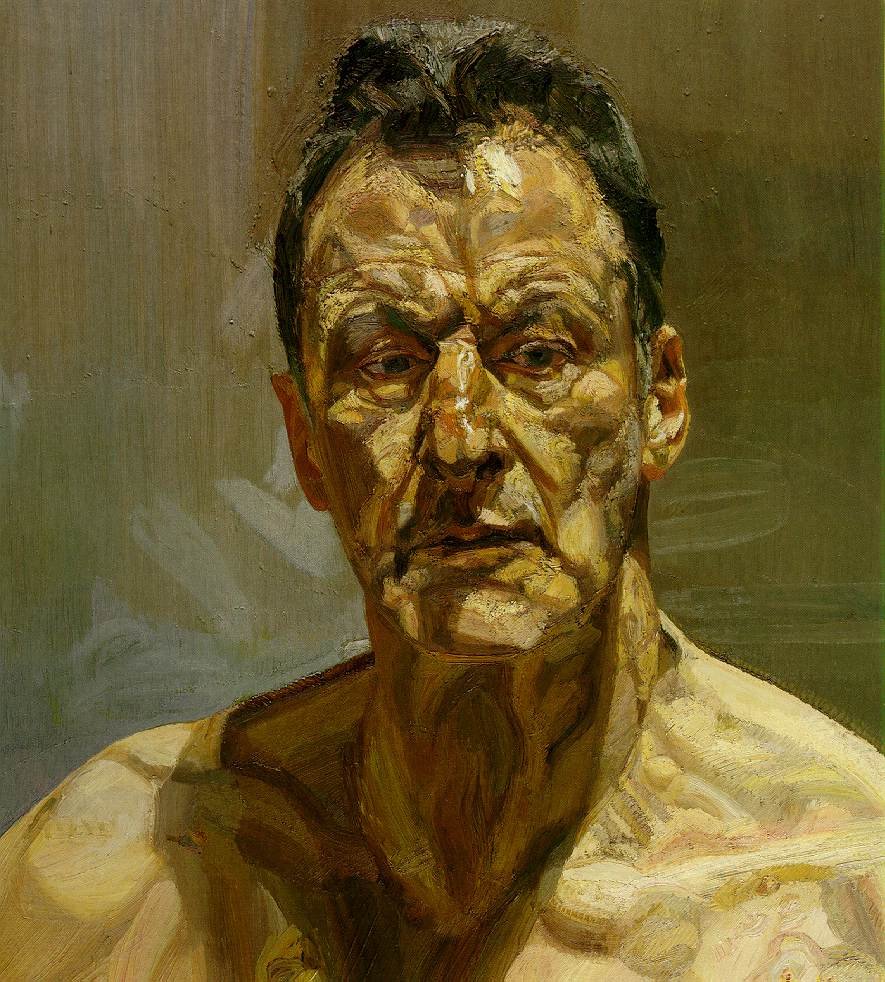
Via: Bloomberg
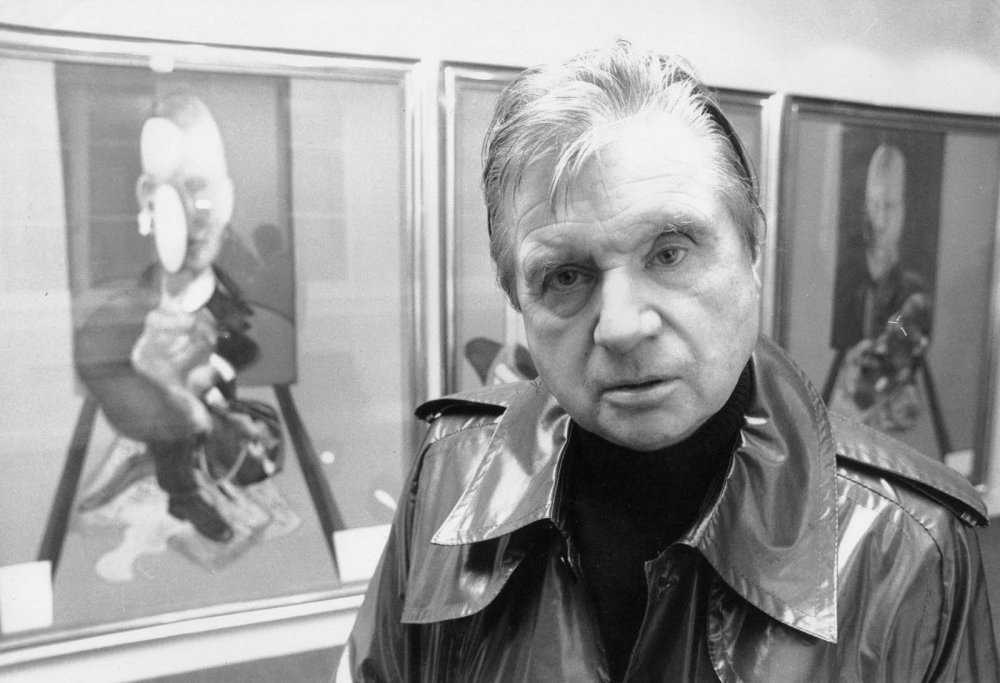
THE GREAT
INTERVIEWS
OF FRANCIS
BACON
David Sylvester: Have you ever had any desire at all to do an abstract painting?
Francis Bacon: I've had a desire to do forms, as when I originally did Three Forms at the Base of the Crucifixion. They were influenced by the Picasso things which were done at the end of the 20s ...
After that triptych, you started to paint in a more figurative way: was it more out of a positive desire to paint figuratively or more out of a feeling that you couldn't develop that kind of organic form further at that time?
Well, one of the pictures I did in 1946, the one like a butcher's shop, came to me as an accident. I was attempting to make a bird alighting on a field. And it may have been bound up in some way with the three forms that had gone before, but suddenly the lines that I'd drawn suggested something totally different, and out of this suggestion arose this picture. I had no intention to do this picture; I never thought of it in that way. It was like one continuous accident mounting on top of another.
An edited extract from Interviews with Francis Bacon by David Sylvester in 1963, 1966 and 1979
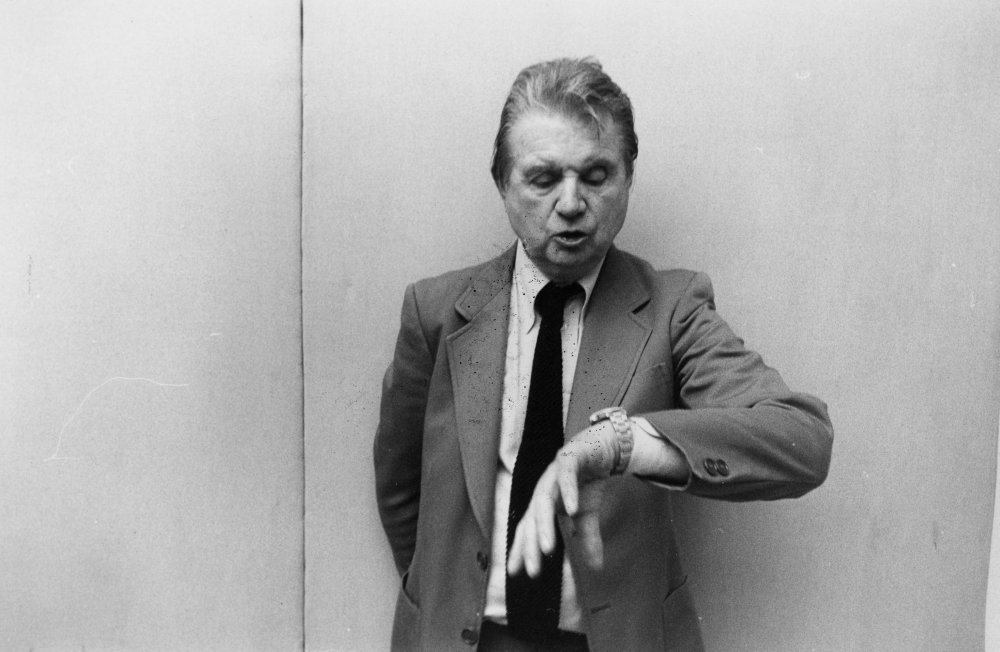
Did the bird alighting suggest the umbrella or what?
It suddenly suggested an opening-up into another area of feeling altogether. And then I made these things; I gradually made them. So that I don't think the bird suggested the umbrella; it suddenly suggested this whole image. And I carried it out very quickly, in about three or four days.
It often happens, does it, this transformation of the image in the course of working?
It does, but now I always hope it will arrive more positively. Now I feel that I want to do very, very specific objects, though made out of something, which is completely irrational from the point of view of being an illustration. I want to do very specific things like portraits, and they will be portraits of the people, but, when you come to analyse them, you just won't know - or it would be very hard to see how the image is made up at all. And this is why in a way it is very wearing, because it is really a complete accident. For instance, the other day I painted a head of somebody, and what made the sockets of the eyes, the nose, the mouth were, when you analysed them, just forms which had nothing to do with eyes, nose or mouth; but the paint moving from one contour into another made a likeness of this person I was trying to paint. I stopped; I thought for a moment I'd got something much nearer to what I want. Then the next day I tried to take it further and tried to make it more poignant, more near, and I lost the image completely. Because this image is a kind of tightrope walk between what is called figurative painting and abstraction. It will go right out from abstraction, but will really have nothing to do with it. It's an attempt to bring the figurative thing up on to the nervous system more violently and more poignantly.
In painting this Crucifixion, did you have the three canvases up simultaneously, or did you work on them quite separately?
I worked on them separately, and gradually, as I finished them, I worked on the three across the room together. I did in about a fortnight, when I was in a bad mood of drinking, and I did it under tremendous hangovers and drink; I sometimes hardly knew what I was doing. And it's one of the only pictures that I've been able to do under drink. I think perhaps the drink helped me to be a bit freer.
"I sometimes hardly knew what I was doing. And it's one of the only pictures that I've been able to do under drink. I think perhaps the drink helped me to be a bit freer."
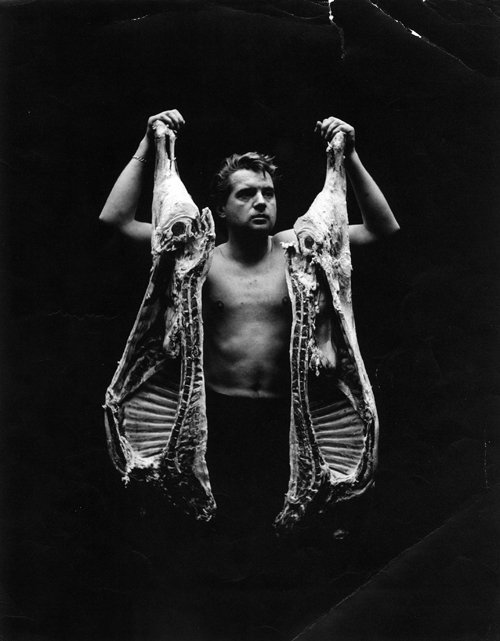

Via: The Guardan
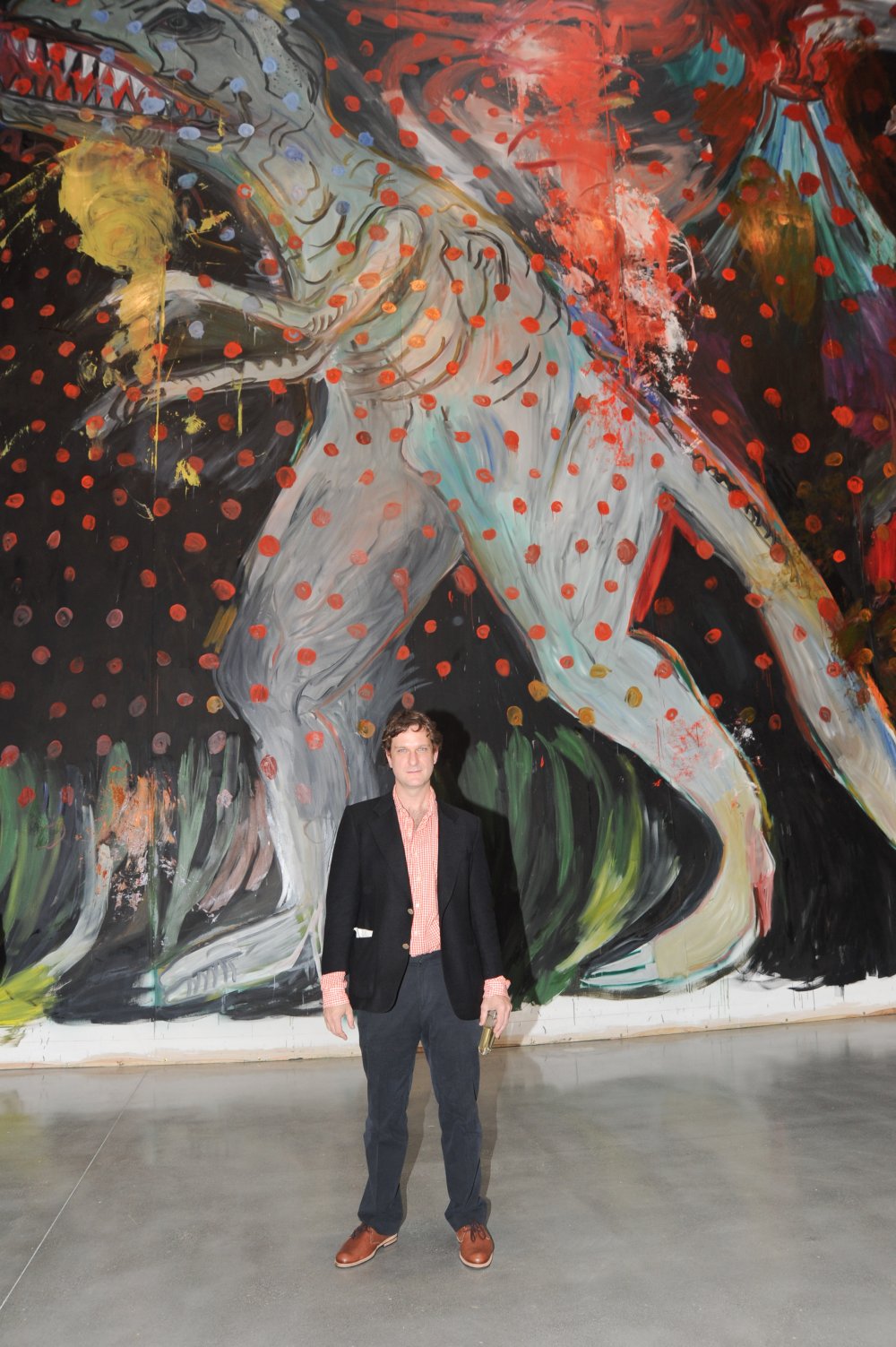
JOSH
SMITH
If lush green paddocks, a pig roast, an abundance of celebrities, artists, art dealers, pretty young hipsters, collectors and, yes, champagne, could determine quality in art, then the New York-based painter Josh Smith, may have just hit the big time.
At the May 7th opening of his solo show, The American Dream, at the Brant Foundation Art Study Center, in Greenwich, Connecticut, cultural heavy-hitters showed up in droves to pay homage to their powerful host's most recent endorsement. Like a present-day Gatsby, newsprint magnate and mega-collector Peter Brant opened his converted barn to Smith's buttery large-scale paintings. Loosely rendered fish, skeletons, and a giant, exceedingly goofy, dinosaur, were all apparently dashed off in a single frenzied month.
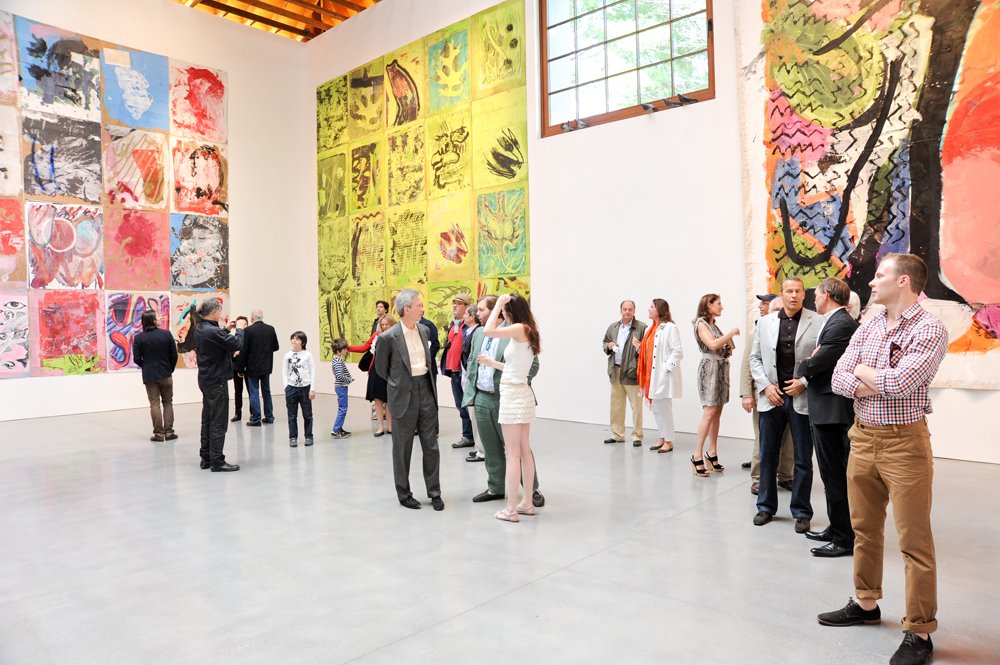
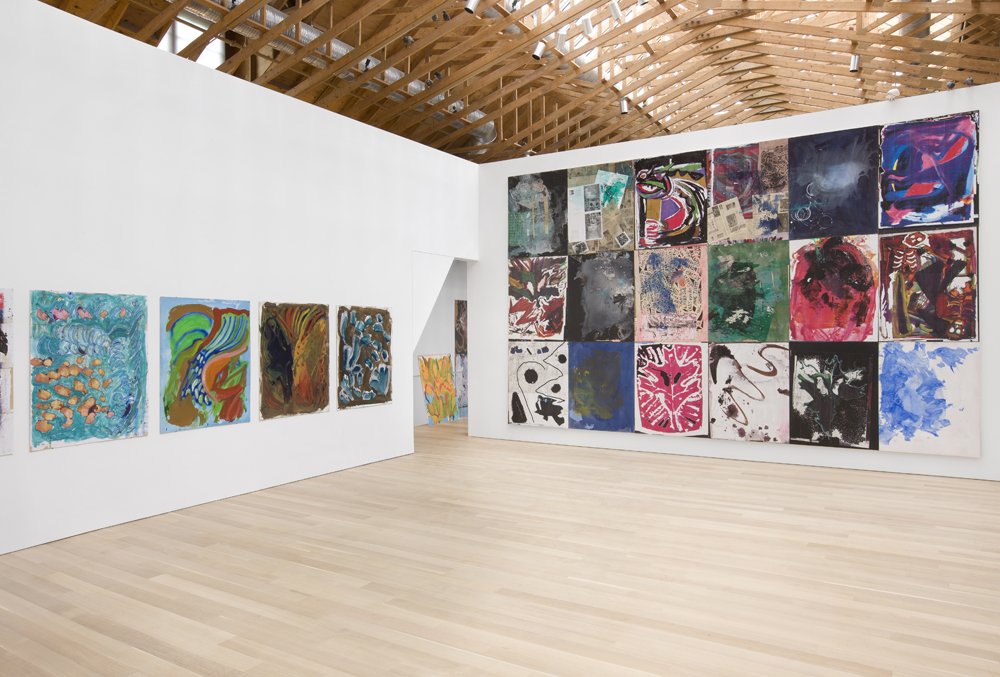
The fabulously dressed guests, the hushed, high-octane vibe (everything--from the valet parking to the catering--ran like a well-oiled machine), the spectacular sky, accented with the occasional fluffy white cloud, gave the party a magical feel, as if we were witnessing the American Dream incarnate.
Yet it was hard not to feel a tad skeptical about the pleased-as-punch smiles of Christopher Walken and Naomi Campbell, not to mention art stars Jeff Koons, Julian Schnabel, and Maurizio Cattalan. And what about those dealers? They all looked like best friends! It was as if the gorgeous day, and Brant's star-studded event, somehow made Smith's paintings wonderful by extension.
Via: Huffpost Arts
1
2
3
Keep reading this story.
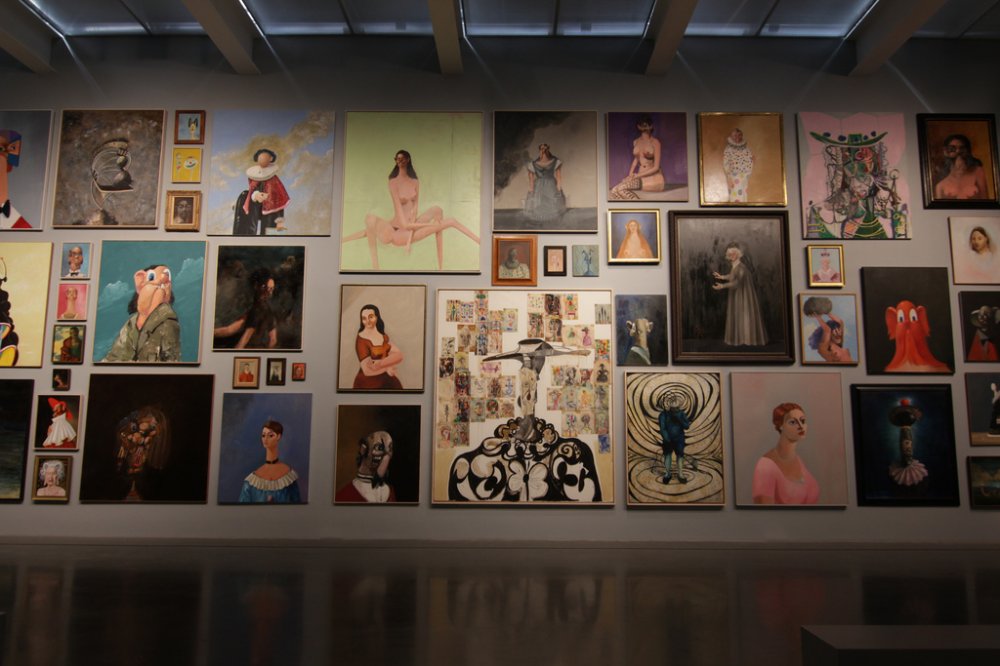
"DEAR PICASSO"
Revisiting and recasting the master's work, from Cubism through Guernica to the Mosqueteros of his old age, new generations of artists are discovering Picasso all over again
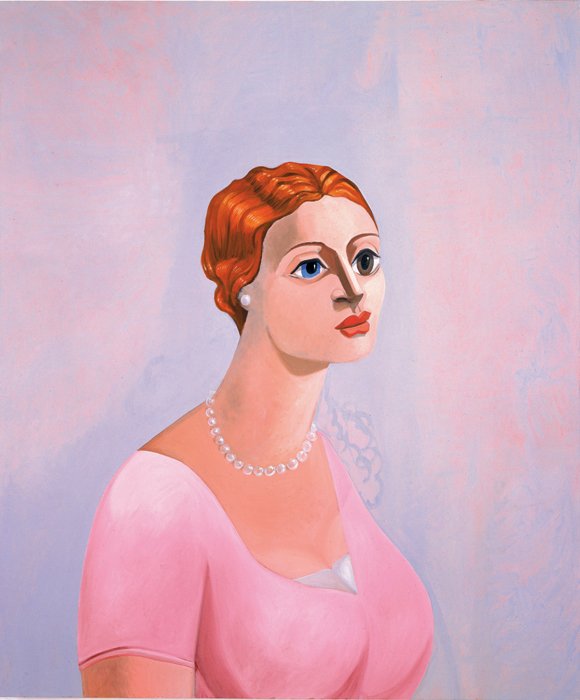
Pablo Picasso cast a long and sometimes oppressive shadow across the landscape of 20th-century art. American artists from Max Weber to Jasper Johns absorbed his example and marveled at his virtuosity. Jackson Pollock famously declared, "That [bleeping] Picasso . . . he's done everything." (Pollock even began a 1950 drip painting with a series of Picassoid figures but obliterated them under skeins of paint.) In Europe, painters as diverse as Richard Hamilton and Martin Kippenberger paid homage to Picasso, while Pop artists in the United States, like Claes Oldenburg and Roy Lichtenstein, reworked his subjects in soft fabric or Benday dots.
But what about contemporary artists—the young and those in midcareer? Does Picasso still cast any sort of spell, almost 40 years after his death? The recent retrospective of George Condo's work at the New Museum in New York drew attention to the question of how much the colossus of modernism still haunts artists in the 21st century. Condo, 55, claims to have spent two years trying to understand Picasso's language "from within," practicing what he calls "psychological Cubism." Many others of his generation have also been wrestling with the master, while a number of younger painters and sculptors are discovering him all over again.
Many artists are introduced to Picasso as students. "My art history-survey teacher basically said, 'I want to give any of you who come to this school thinking you're going to be the next Picasso a dose of reality,'" recalls Sean Landers. "'There are none of you who are artists of this caliber, or we would have known it by now.'" Landers, who shows at Friedrich Petzel Gallery in New York, took that as a challenge to make ambitious paintings that borrowed heavily from Picasso. He showed them at Andrea Rosen Gallery in 2001. Though the results provoked a mixed reception, Landers—at least briefly—found "a vehicle to talk about myself and my own creative practice, [using] Picasso's imagery almost like an art material to make my own paintings."
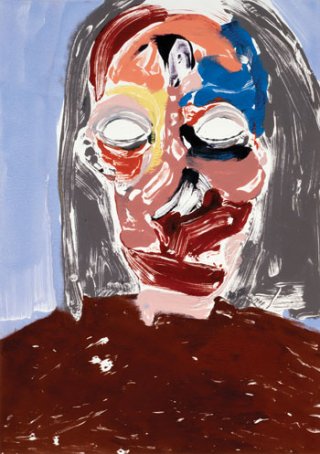
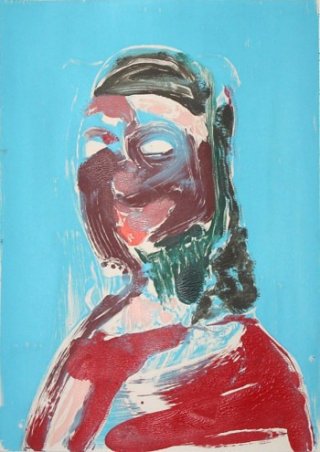
By: Anne Landi
Keep reading this article at ArtNews.com
Nicola Tyson, a British-born figurative painter, recalls first encountering Picasso when she was an "angry young feminist painter in the 1980s. As students, we did a Demoiselles d'Avignon, substituting phallic imagery in place of the prostitutes." Though her debt to him is more oblique now, Tyson, who also shows at Friedrich Petzel, concedes that Picasso is the one who "gave permission way back to represent the figure differently from the traditional academic form." His depictions of "vacant women," she adds, "worked as a spur for me toward more self-discovery—out of a kind of anger and a feeling that there was something lacking in his work, something that wasn't represented."
Like Landers, an artist might choose to do an apprenticeship with Picasso before moving on to other turf. Mike Bidlo, one of the original appropriation artists of the 1980s, spent the middle part of that decade pursuing what he describes as an "indentured servitude" to the artist. Bidlo, who shows at Tony Shafrazi Gallery in New York, created his own versions of the Demoiselles and Guernica and painted 80 canvases of Picasso's women. "You would never mistake a Bidlo for a Picasso," he admits, but those years he spent "engaging and dialoguing with him" opened up many doors. "You never really drop an artist of his stature," he adds, "because he then becomes part of your DNA."
Since Picasso's output was so prodigious and multi-faceted, an artist can engage with only selected aspects of his explosive creativity. Ray Smith, for instance, has returned to Guernica several times, often recycling it for satiric ends. After then-Secretary of State Colin Powell gave a speech at the United Nations in 2003 announcing that the United States would start bombing Iraq, he answered questions from the audience while standing in front of a tapestry based on Guernica, a painting that denounced the aerial devastation of a small Basque village during the Spanish Civil War. Smith took a photo of the reflection of the tapestry on the room's marble floor and fed it through a filter in Photoshop that reads temperatures in lines and colors. The result is a painted, 24-foot-long melting-and-swirling distortion of the original.
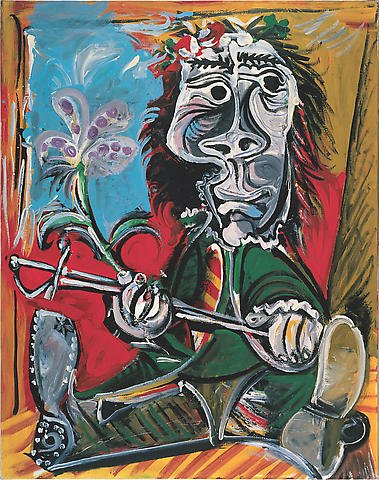
Pablo Picasso "Seated Man with Sword and Flower"
1969 - Oil on canvas
George Condo "Portrait of a Woman " 2002
(Right) Nicola Tyson, Portrait Head #55, 2003. Picasso spurred Tyson "toward more self-discovery."
Nicola Tyson, Portrait Head #2
Source: Art News
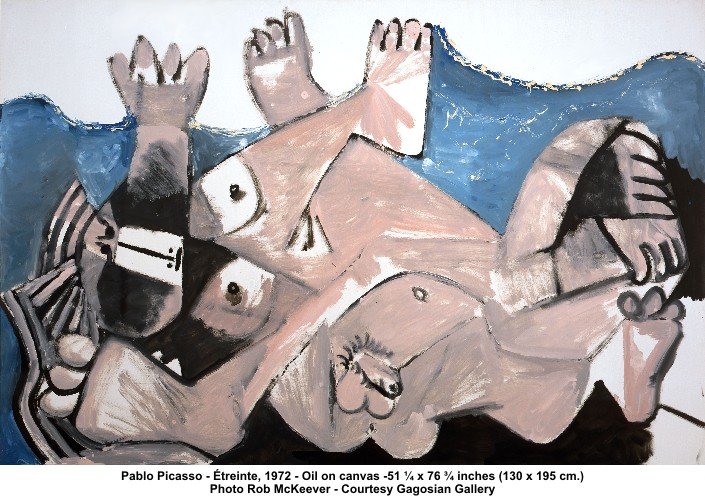

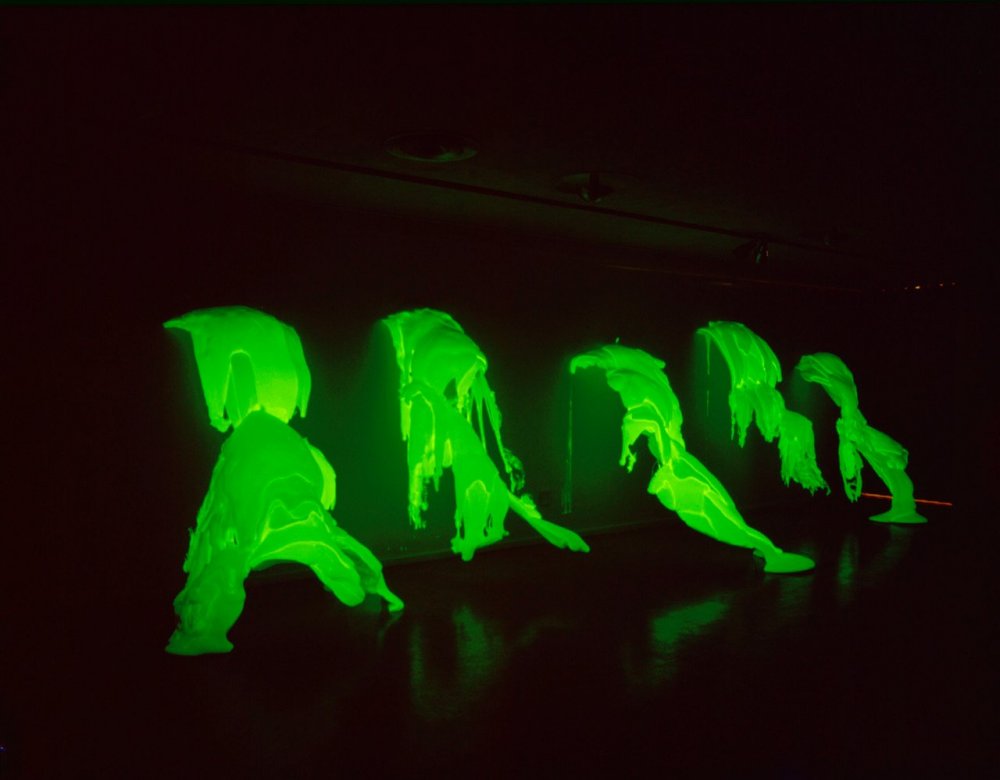
Over the past forty years, Lynda Benglis has developed a distinctive and influential sculptural language. Benglis rose to prominence during the 1960s and ’70s, a time when her singular practice both intersected with and transcended the categories of post-Minimalism and feminist art. Benglis’s sculptures suggest a remarkable range of influences, including the gestures of Abstract Expressionist painting, geological flows, and ceremonial totems. They rely on both exposing process and crafting feats of illusion to create sumptuous forms.
Originally from Louisiana, Benglis moved to New York in the mid-1960s and began her career as a painter influenced by Minimalism and Color Field painting. In 1968, she began creating her “Fallen Paintings” by pouring brightly colored latex in overlapping flows directly onto the floor, critically engaging with earlier painters like Jackson Pollock and Helen Frankenthaler. Benglis would gradually expand the range of her sculptural materials to include polyurethane foam, beeswax, plaster, cast aluminum, and bronze to name just a few. She moved effortlessly from floor to corner to wall and back again creating objects with palpable ties to her body and its potential actions, which have often been described as “frozen gestures.” Resisting the characterization as a process-based artist, Benglis equally embraced symbolism and decoration, confounding expectations and transforming the relationship between the viewer and the sculptural object.
The current exhibition, the artist’s first retrospective in New York and first in twenty years, spans the range of Benglis’s career including her early wax paintings, her brightly colored poured latex works, the “Torsos” and “Knots” series from the 1970s, and her recent experiments with plastics, cast glass, paper, and gold leaf. It features a number of rarely exhibited historic works including Phantom (1971), a dramatic polyurethane installation consisting of five monumental sculptures that glow in the dark, and the installation Primary Structures (Paula’s Props), first shown in 1975.
Alongside her sculptural output, Benglis created a radical body of work in video, photography, and media interventions that explore notions of power, gender relations, and role-playing. These works function in tandem with her sculpture to offer a pointed critique of sculptural machisimo and suggest a fluid awareness of gender and artistic identity. They also contribute to an understanding of the artist’s objects as simultaneously temporal and physically present, intuitive and psychologically charged.
This exhibition is organized by the Irish Museum of Modern Art, Dublin, in collaboration with Van Abbemuseum, Eindhoven; Le Consortium, Dijon; The Museum of Art, Rhode Island School of Design, Providence; and the New Museum, New York.
LYNDA BENGLIS @ NEW MUSEUM

Catch this exhibit before it ends. Benglis's show is paint abstraction as sculpture..and so much more.
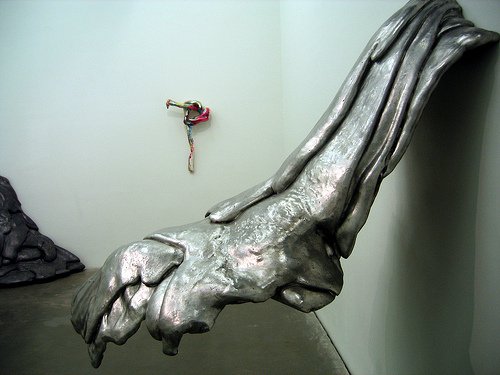
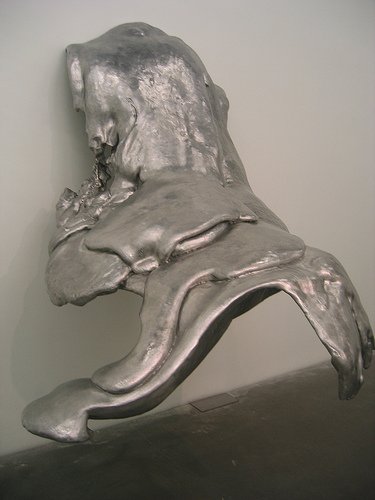
Via: New Museum
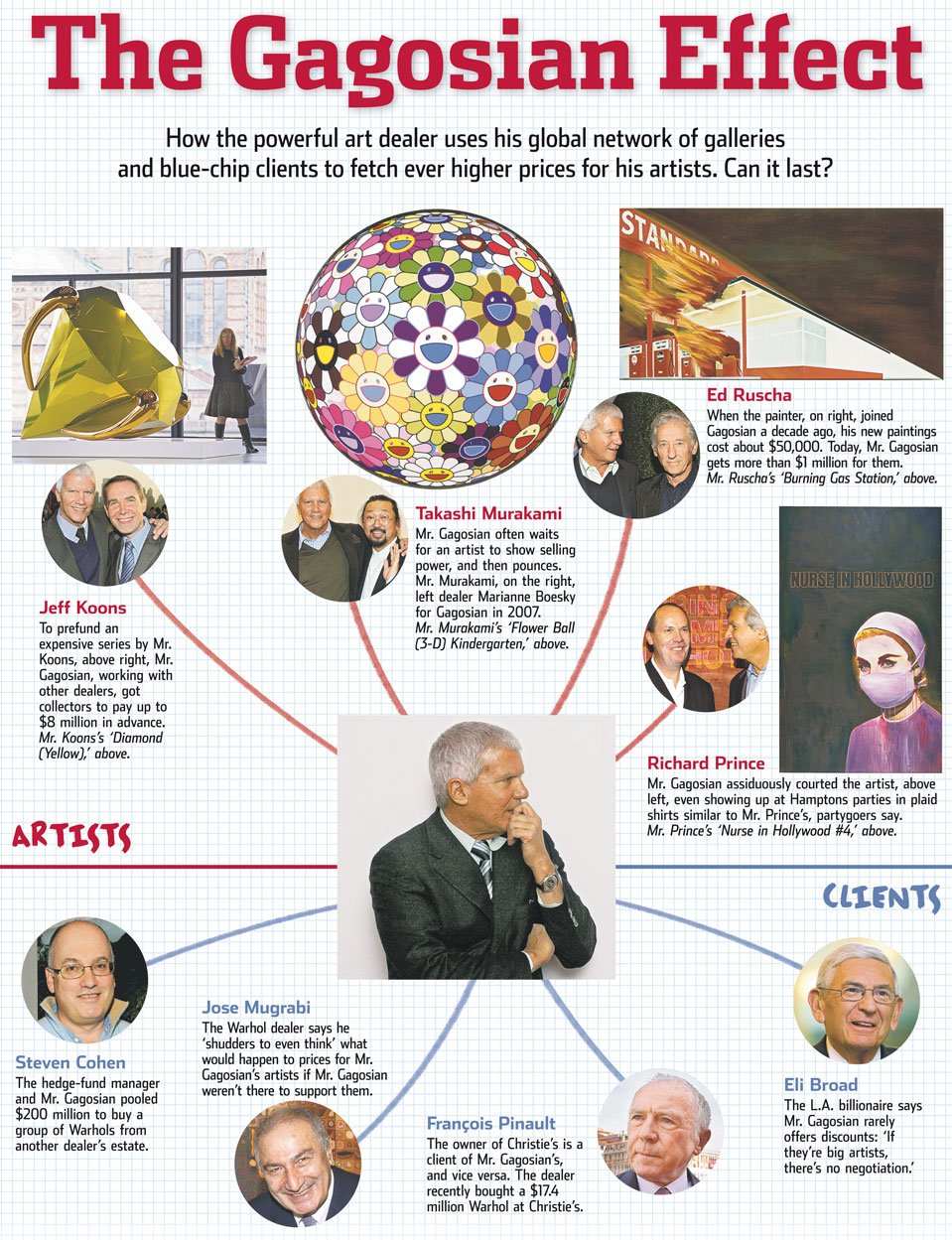
From: WSJ.com
Nexus Vomitus is
The Art of the Vomit

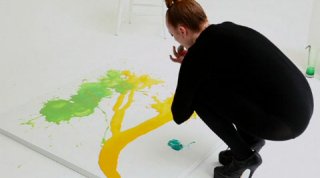
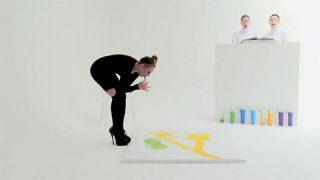
LiveStudio saw the marriage of music and performance art in the form of Nexus Vomitus, a collaboration between vomiting artist Millie Brown and opera singers Patricia Hammond and Zita Syme. During the one-off performance piece, Millie created a rainbow-like spectrum of vomit on canvas to Patricia and Zita’s melodic interlude.
Via: SweetStation.com
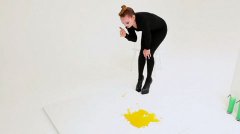
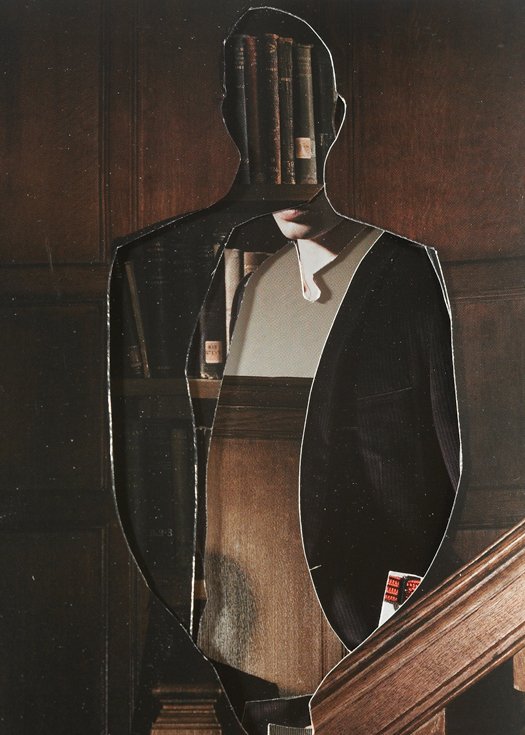
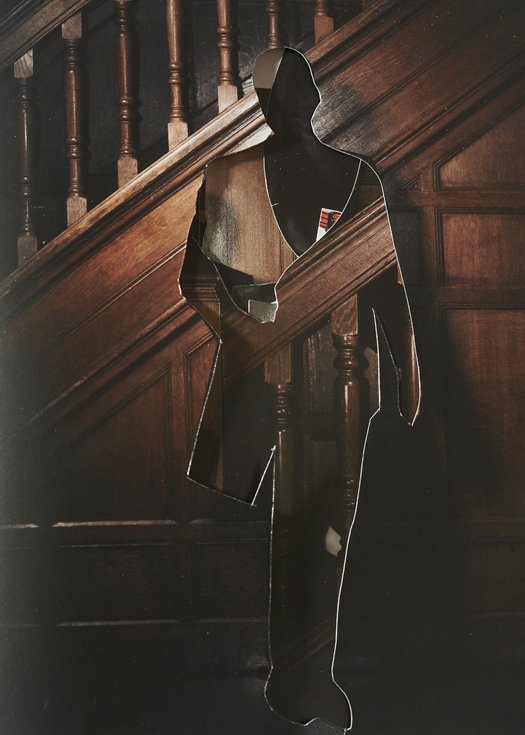
James Gallagher curated this wonderful exhibition dealing with the theme 'COLLAGE' and we took part in it.
Collages rarely reveal the sources from which they are created and rarely expose the remnants left behind after extracting a desired element. This magazine acts as a counterpart to collage; the remnants exhibit their own visual power. Through the removal and deconstruction of the existing layout, new images appear while flipping through the magazine allowing the viewer to redefine their way of seeing and creating. (from HORT's site)
HORT: Collages
Source: HORT
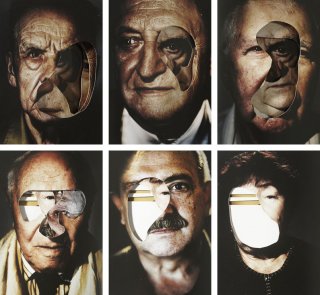
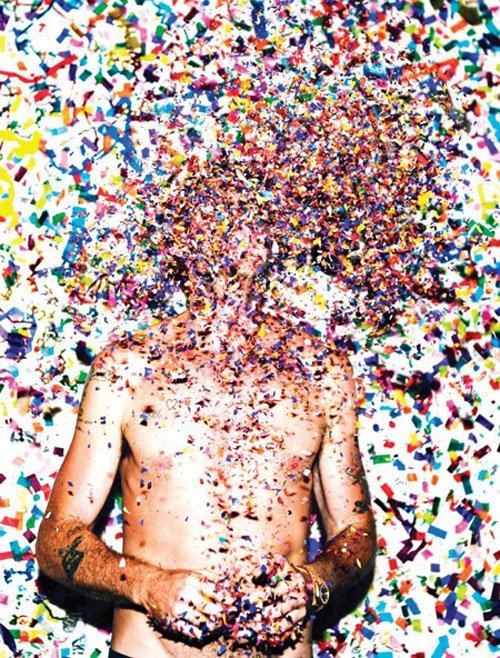
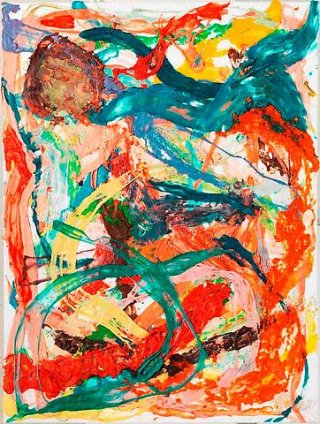
DAN COLEN
Yet to be titled, 2010
Chewing gum on canvas
48 x 36 inches (121.9 x 91.4 cm)
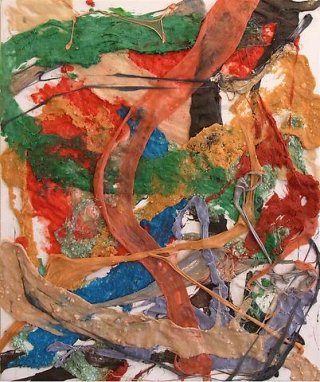
DAN COLEN
Last in line, 2010
Chewing gum on canvas
36 x 30 1/4 inches (91.4 x 76.8 cm)
BUBBLE GUM ART...LITERALLY
Dan Colen was born in 1979, New Jersey. He graduated with a BFA in Painting from the Rhode Island School of Art and Design in 2001. International exhibitions include the 2006 Whitney Biennial, New York; "USA Today," The Royal Academy, London; "Defamation of Character," PS1 Contemporary Art Center, Long Island, New York; and "Fantastic Politics," The National Museum of Art, Architecture and Design, Oslo. Colen is famous for having his first Gagosian exhibit in the galleries bathroom. His works look like oil paint in images, but they are in fact paintings made out of chewing gum. Yeah....chewing gum!
Photo of DAN COLEN. Photo by Marley Kate.
To view more of Colen's work go to this link.
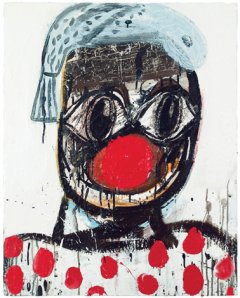
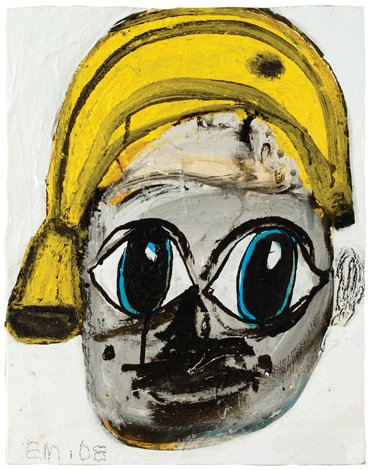
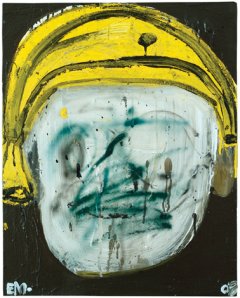
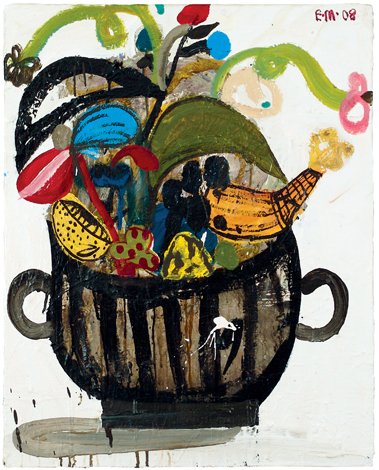
EDDIE
MARTINEZ
Martinez’s painting is a way of recording the chaotic nature of life into paint, to be analyzed and observed later. What Martinez offers is not a theoretical concept that can be proven or disproved. Something more mysterious and inexplicable is happening here, based not in hard facts but in the very nature of the soft mutability of paint. Martinez navigates an ocean of information with instinctive talent, and defies the ability to pin down and clarify.
Martinez’s paintings come out of a practice of drawing that almost never stops, a steady outpouring of imagery. Filtering through the background noise of contemporary life and aligning it with the past, the references for a Martinez painting pop in from everywhere. The longer one spends with his works, the more one absorbs that this is a renegade paint form, and the constant movement is why Martinez paintings feel so fresh yet simultaneously classic.
Organizing his thoughts physically on the canvas, Martinez isn’t afraid to attack the surface with bold brushwork and then scrape away at and carve into it, obsessively adding and canceling, layer upon layer. Constant learning, from both art history and contemporary art activities, is absorbed into his character to the point of habit. Daily life ephemera, conversations, thoughts, ideas are all recorded in the paint, and his spontaneity gives the carefully worked paintings their raw feeling.
Martinez has developed his own distinct style with a personal iconography of recurring motifs that he both repeats and transmutes. Like his wild-eyed blockheads, monolithic figures that are at times cracked open by a sword, or joined by other blockheads in a gazing stack. Avoiding all pretension, a continuous story spreads out across his work, developing from one series to the next, while all the while reveling in the sheer beauty of the paint.
View more from his 2008 Show at Loyal in Sweden.
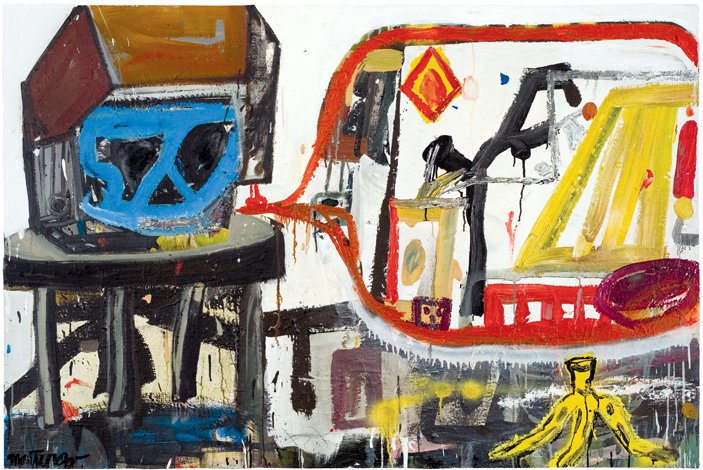
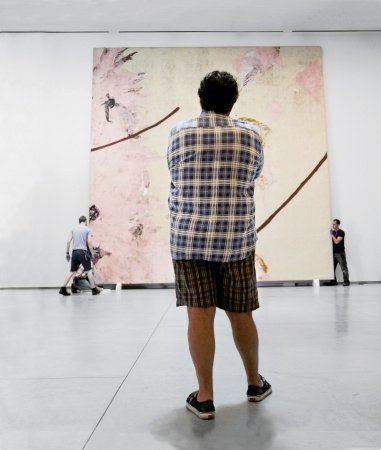
IT MIGHT SEEM ABSURD to describe Julian Schnabel as neglected, given his great celebrity, his flourishing career as a film director, and his near-mythic status as a 1980s art star, but for more than 20 years his paintings have been passed over in silence by most critics and largely ignored by curators. His paradox is to be at once highly visible as a cultural figure and deeply invisible as a painter. Some of this invisibility is the result of his being dismissed by influential academic theorists as a mere resuscitator of modernist styles in an outmoded medium. Another factor has been the unexpected success of his films, which has drawn attention away from his activity as a painter; the meme “His movies are better than his paintings” has flourished almost since the release of his first film, Basquiat (1996).
A balanced assessment of Schnabel’s achievement has been hampered by the difficulty of seeing his work in depth. Astonishingly, Schnabel has not been given a museum exhibition in the U.S. since his Whitney midcareer survey of 1987. (Recently, L.A. MOCA director Jeffrey Deitch signaled an end to what will have been a quarter-century embargo when he announced his museum is planning a Schnabel retrospective for 2012.) There have been numerous gallery shows, mostly in New York, but only a small percentage of this prolific artist’s work ever made it into these exhibitions. Schnabel’s penchant for painting at billboard scale has been one obstacle to a fuller presentation of his work, and so has his tendency to hold back some important works from public view.
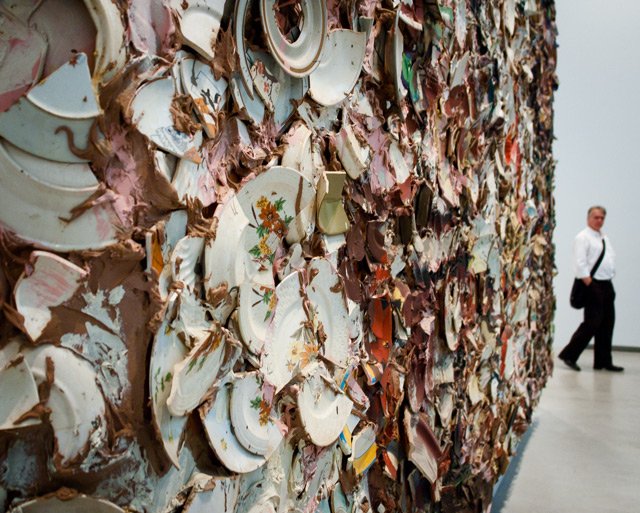
JULIAN
SCHNABEL
This is a really interesting article by Raphael Rubinstein that was published in this months issue of Art in America. Rubinsteins examines Schnabel's history or lack there of with some, not all American museum establishments and how that might change very soon thanks to Deitch mounting a retrospective at L.A.'s MOCA in 2012.
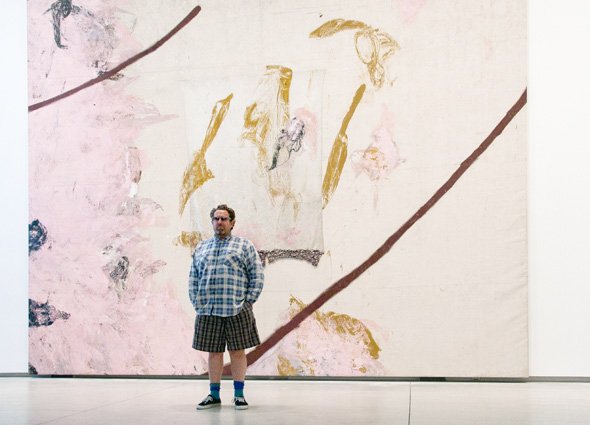
Beyond these shores, Schnabel has not been as neglected. In 2003, the Schirn Kunsthalle in Frankfurt mounted an extensive survey of his work that traveled to the Reina Sofía in Madrid and the Mostra d’Oltremare in Naples. More recently, the Art Gallery of Ontario (AGO) in Toronto presented “Julian Schnabel: Art and Film,” an exhibition that brought together some 40 paintings, two sculptures and eight Polaroids from 1975 to 2010. Asserting that cinema has played a central role in Schnabel’s work from the beginning, the show’s organizer, David Moos, who is the AGO’s curator of modern and contemporary art, assembled a compelling survey of Schnabel’s career in which every work had some connection to film. The exhibition coincided with the 2010 Toronto Film Festival, where Schnabel’s new movie, Miral, had its North American debut. In June, a large Schnabel show opens at the Museo Correr in Venice, coinciding with this year’s Biennale.
A visit to the AGO show last November made me realize, first, how few of Schnabel’s paintings I’d seen in the past two decades, and second, how powerful his work can be when encountered in person. Everyone knows that the reliance on reproductions of artworks (and paintings, in particular) fosters highly inaccurate notions about them, but it is still very easy to base one’s estimation of individual works or even entire careers on reproductions now, given their accessibility on the Internet. And more and more of our art experience happens on screens the size of placemats. All paintings suffer from reproduction, but Schnabel’s tend to be depleted more than most. The enormous scale of so many of them, which one experiences almost the way one experiences architecture; the disruptive surfaces of the plate paintings, in which images coalesce or break up dramatically depending on one’s viewing distance; the textures of his wildly various supports (weathered tarpaulins, pony skin, black velvet, polyester) that invite intensely haptic responses from viewers; a bounty of materials that range from encaustic and glossy resin to deer antlers and antique embroidery—these are all primary facts about the works that get lost in even the best photographic reproductions. It’s almost as if the artist deliberately set out to make paintings that resist easy translation into the medium of photography. Pursuing such a strategy would be consistent with Schnabel’s oft-stated belief in the importance of the viewer’s presence before the work of art. In 2003, he told Max Hollein, who organized the Schirn Kunsthalle show, “Paintings are physical things that need to be seen in person. It’s hard to get a painting’s intensity from a reproduction.”
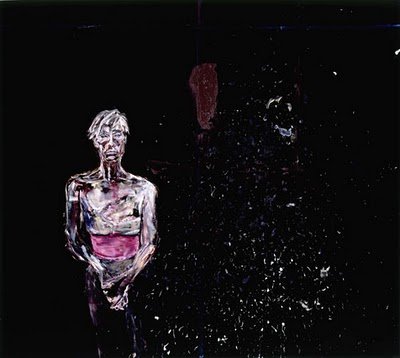
Portrait of Andy Warhol (1982). Half of an artistic exchange (Warhol did a portrait of Schnabel), it presents Warhol as a spectral figure glowing against a black-velvet background. (Like nearly all of Schnabel’s portraits, this one was done from life.) Delineated with abrupt strokes of bone white and scumbled violets and yellows, Warhol could be one of El Greco’s vulnerable, sinewy saints.
Julian Schnabel standing in front of his painting El Espontaneo (For Abelardo Martinez), 1990, oil on white tarpaulin, 22 feet square. Courtesy Art Gallery of Ontario, Toronto. Photo Ian Lefevbre.
Back Next